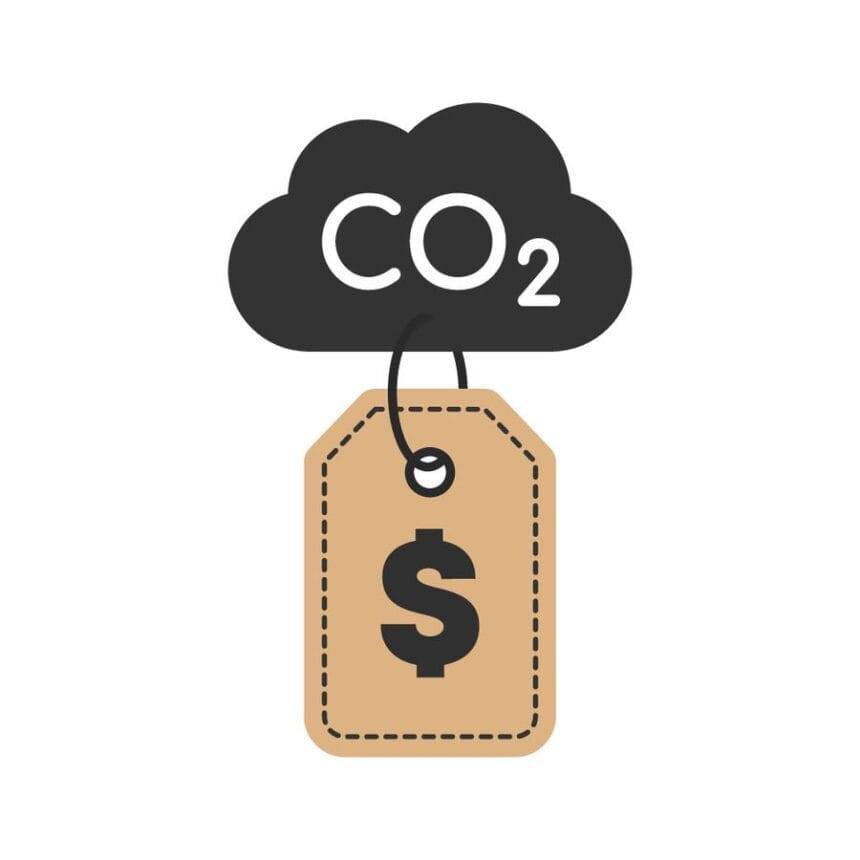Main Points In Hindi (मुख्य बातें – हिंदी में)
यहां दिए गए लेख के मुख्य बिंदुओं का सारांश प्रस्तुत है:
-
उत्सर्जन मूल्य निर्धारण की आवश्यकता: अर्थशास्त्रियों का मानना है कि उत्सर्जन पर कीमतें एक प्रभावी नीति उपकरण हैं और इन्हें अधिक वस्तुओं और देशों में लागू किया जाना चाहिए। वैश्विक उत्सर्जन का 70% अभी भी मूल्य निर्धारण से बाहर है।
-
कारbon टैक्स और उत्सर्जन व्यापार योजना: देश उत्सर्जन की कीमत तय करने के लिए कार्बन टैक्स या उत्सर्जन व्यापार योजना का उपयोग कर सकते हैं। कार्बन टैक्स में सरकार द्वारा लगाए गए कर शामिल होते हैं, जबकि उत्सर्जन व्यापार योजना में कंपनियां अपने उत्सर्जन को नियंत्रित करते हैं और बाजार में भत्ते का व्यापार करते हैं।
-
गरीब परिवारों पर सकारात्मक प्रभाव: हाल के अध्ययनों से पता चला है कि सही ढंग से लागू की गई कार्बन मूल्य निर्धारण नीतियां गरीब परिवारों और किसानों को सकारात्मक रूप से प्रभावित कर सकती हैं। एक समान कार्बन मूल्य नीति अमीर और गरीब के बीच आय असमानता को कम कर सकती है।
-
किसानों की आय में सुधार: उत्सर्जन पर करों से किसानों की आय में सुधार हो सकता है यदि उन्हें कार्बन सिंक बनाने वाली प्रथाओं के लिए वित्तीय प्रोत्साहन दिया जाता है। इससे वे अधिक लाभ कमा सकते हैं और साथ ही कार्बन की कमी में भी योगदान कर सकते हैं।
- नीतियों की समावेशिता और प्रभावी कार्यान्वयन: मौजूदा कार्बन मूल्य निर्धारण ढांचे को अधिक निष्पक्ष और न्यायसंगत बनाने की आवश्यकता है, ताकि ये नीतियां सब वर्गों के कल्याण पर नकारात्मक प्रभाव डाले बिना उत्सर्जन को कम करने में मदद कर सकें।
Main Points In English(मुख्य बातें – अंग्रेज़ी में)
Here are the main points from the article discussing carbon pricing and its impacts:


-
Challenges and Benefits of Carbon Pricing: Economists advocate for carbon pricing as an effective tool to reduce emissions and encourage equitable economic benefits for low-income families and farmers. Despite the potential advantages, the implementation of such pricing strategies remains challenging due to concerns about their impact on people, with a significant portion of global emissions still uncovered.
-
Mechanisms of Carbon Pricing: Countries can establish carbon pricing primarily through carbon taxes or emissions trading schemes. A carbon tax involves levying a tax on emissions, while emissions trading allows companies to trade allowances for emission credits, thereby controlling overall emissions in the economy.
-
Unequal Impacts on Income Levels: Current carbon pricing mechanisms have often been implemented unevenly, inadvertently benefiting wealthier individuals over poorer ones. For instance, low-income households may end up paying a larger share of their income on carbon-intensive goods, which could be deemed regressive taxation.
-
Recommendations for Equitable Pricing: To mitigate the regressive impacts of carbon pricing, experts suggest uniform carbon pricing across various sectors and regions. Implementing a standardized carbon price could significantly reduce the financial burden on low-income families, as evidenced by research showing potential reductions in income disparities based on carbon pricing scenarios.
- Benefits for Farmers: Carbon pricing can also provide financial incentives for farmers by rewarding them for increasing carbon storage in their soils. If structured correctly, these incentives could lead to substantial income opportunities for farmers while promoting sustainable practices that enhance carbon capture in agriculture.
Complete News In Hindi(पूरी खबर – हिंदी में)
अर्थशास्त्री लंबे समय से उत्सर्जन पर कीमत तय करने की वकालत करते रहे हैं, लेकिन इसका कार्यान्वयन कठिन रहा है … [+]
गेटीकार्बन मूल्य निर्धारण के लाभ उत्सर्जन को कम करने से कहीं अधिक हैं। इसका गरीब परिवारों और किसानों पर भी सकारात्मक प्रभाव पड़ सकता है। अर्थशास्त्रियों का लंबे समय से मानना है कि उत्सर्जन पर कीमत एक प्रभावी नीति उपकरण है जिसे अधिक वस्तुओं और अधिक देशों को शामिल करने के लिए बढ़ाया जाना चाहिए। के बारे में वैश्विक उत्सर्जन का 70% अभी भी उत्सर्जन पर कीमत द्वारा कवर नहीं किया गया है। उत्सर्जन पर कीमत लगाने की धीमी गति का एक कारण यह चिंता है कि इसका लोगों पर क्या प्रभाव पड़ेगा।
कोई देश मुख्य रूप से कार्बन टैक्स के माध्यम से या उत्सर्जन व्यापार योजना स्थापित करके उत्सर्जन की कीमत निर्धारित कर सकता है। कार्बन टैक्स वह है जहां सरकार उत्सर्जन पर कर लगाती है, और कर के दायरे में आने वाली संस्थाओं को कर का भुगतान करना होगा। एक उत्सर्जन व्यापार योजना के तहत, कंपनियां अपने उत्सर्जन या अपनी आपूर्ति श्रृंखला में कार्बन सामग्री के लिए भत्ते प्राप्त करती हैं, सरकार भत्ते को नियंत्रित करती है और बाजार उनका व्यापार करता है।
हालाँकि ये मूल्य निर्धारण रणनीतियाँ बोझिल लग सकती हैं, दो अध्ययनों के हालिया साक्ष्य से पता चलता है कि वे अर्थव्यवस्था-कम आय वाले परिवारों और किसानों पर सकारात्मक प्रभाव डाल सकते हैं।
कार्बन मूल्य से गरीब परिवारों को कैसे लाभ होता है?
कार्बन की कीमतें अब तक गैर-समान या विषम तरीके से लागू की गई हैं, जिसका अर्थ है कि कुछ वस्तुओं और क्षेत्रों को इन कीमतों से छूट दी गई है। इस विविधता के पीछे तर्क विभिन्न आय स्तरों पर परिवारों पर ऐसी नीति की असमान घटनाओं से बचना है। इसका मतलब यह है कि नीति निर्माता जानबूझकर कुछ प्रकार के सामान या अर्थव्यवस्था के क्षेत्रों को कर से हटा देते हैं ताकि यह सुनिश्चित हो सके कि उन पर असंगत प्रभाव न पड़े।
अच्छे इरादों के बावजूद, जिस तरह से यूरोपीय संघ में उत्सर्जन की कीमत निर्धारित की गई है, उससे गरीबों की तुलना में अमीरों को अधिक मदद मिली है, जिसे अर्थशास्त्री प्रतिगामी कर कहते हैं। अंतर्राष्ट्रीय मुद्रा कोष द्वारा नया शोध. मौजूदा ढांचे के तहत, फ्रांस और जर्मनी में गरीब परिवार उतना ही भुगतान करते हैं प्रति टन $2 अधिक उत्सर्जित कार्बन डाइऑक्साइड का. केवल कुछ वस्तुओं पर लागू होने पर कार्बन की कीमत गरीब परिवारों पर असंगत रूप से प्रभाव डाल सकती है। उदाहरण के लिए, यदि कर केवल हीटिंग के लिए उपयोग किए जाने वाले ईंधन पर लागू किया जाता है, तो यह प्रतिगामी हो सकता है क्योंकि गरीब परिवार अपनी आय का अधिक हिस्सा कार्बन-सघन वस्तुओं जैसे ईंधन हीटिंग पर खर्च करते हैं। इसके विपरीत, उच्च आय वाले परिवार अपने बजट का कम हिस्सा ऐसी वस्तुओं पर आवंटित करते हैं। शोध से पता चलता है कि अमीर लोग जिन वस्तुओं का उपभोग करते हैं, जैसे आयातित सामान और हवाई यात्रा, उन्हें बाहर करने से कर प्रतिगामी हो जाता है।
कार्बन की कीमत का गरीबों पर असंगत प्रभाव पड़ने से रोकने के लिए, लेखक कार्बन की कीमत को एक समान बनाने की सलाह देते हैं, जो घरों पर समान रूप से बोझ को बराबर कर सकता है। लेखकों ने यूरोपीय संघ के सभी क्षेत्रों और क्षेत्रों में एक ही कार्बन मूल्य लागू करके इसका परीक्षण किया। निष्कर्षों से पता चलता है कि बुल्गारिया, साइप्रस और माल्टा में, कर का प्रभाव – एक समान कार्बन मूल्य के परिदृश्य के तहत अमीर और गरीबों की आय के बीच का अंतर – 34% और 62% के बीच कम हो गया है, जो दर्शाता है कि गरीब परिवार एक समान कीमत से यह काफी बेहतर होगा।
उत्सर्जन पर कीमत से किसानों को कैसे लाभ होता है?
एक के अनुसार, उत्सर्जन पर कर से किसानों की आय में सुधार हो सकता है नया अध्ययन में प्रकाशित प्रकृति भोजन एलपिछले महीने, यदि कर को किसानों को उनकी कृषि भूमि पर कार्बन सिंक उत्पन्न करने के लिए अर्थव्यवस्था में वापस भेज दिया जाता है। लेखकों की गणना के आधार पर, यदि किसानों को 2050 में अनुमानित ग्रीनहाउस गैस मूल्य $160 प्रति टन CO2 के बराबर की दर से अपनी मिट्टी में संग्रहीत प्रत्येक अतिरिक्त टन कार्बन डाइऑक्साइड के लिए वित्तीय प्रोत्साहन मिलता है, तो वे 235 बिलियन तक कमा सकते हैं।
मिट्टी में अधिक कार्बन जमा करने के लिए कवर फसलें लगाना, बायोचार (जैविक कचरे से बना चारकोल) का उपयोग करना, या कृषि वानिकी (फसलों या चरागाहों के साथ पेड़ लगाना) जैसी तकनीकों को शामिल करने की आवश्यकता होगी, जिससे कृषि भूमि को कार्बन सिंक में बदलने में मदद मिल सकती है। उपरोक्त अध्ययन के अनुसार, इस तरह की प्रथाओं से कार्बन में कमी नए जंगल लगाने जैसे प्रयासों के बराबर है।
उत्सर्जन पर कीमत उत्सर्जन को कम करने के लिए एक प्रभावी नीति लीवर हो सकती है, लेकिन यह धारणा कि इसके प्रतिकूल कल्याण प्रभाव होंगे, ने इस तरह के कर को अलोकप्रिय बना दिया है। हालाँकि, हालिया शोध के साक्ष्य नई अंतर्दृष्टि प्रदान करते हैं कि कैसे उत्सर्जन पर कीमत लोगों के कल्याण और आय से समझौता किए बिना उत्सर्जन को कम करने में मदद कर सकती है। ऐसे नए निष्कर्षों के साथ, राष्ट्रीय सरकारें और नीति निर्माता उत्सर्जन पर मौजूदा मूल्य निर्धारण संरचनाओं के दायरे का विस्तार कर सकते हैं ताकि उन्हें अधिक न्यायसंगत और उचित बनाया जा सके।
Complete News In English(पूरी खबर – अंग्रेज़ी में)
Economists have long supported setting prices on emissions, but implementing it has been challenging due to concerns about its impact on overall well-being … [+]
Getty
The benefits of carbon pricing extend far beyond reducing emissions. It can also have positive effects on low-income families and farmers. Economists believe that pricing emissions is an effective policy tool that should be expanded to include more goods and countries. Currently, around 70% of global emissions are still not covered by emissions pricing. One reason for the slow adoption of pricing is the concern about its effects on people.
A country can set a price on emissions mainly through a carbon tax or an emissions trading scheme. A carbon tax is where the government taxes emissions, and entities within its scope must pay the tax. Under an emissions trading scheme, companies receive allowances for their emissions or carbon content in their supply chains, which the government controls and the market trades.
While these pricing strategies may seem burdensome, recent studies suggest they can positively impact low-income families and farmers.
How does carbon pricing benefit low-income families?
So far, carbon pricing has been implemented unevenly, meaning some goods and sectors have been exempted from these prices. The reasoning behind this is to avoid disproportionate effects on families at different income levels. This means policymakers intentionally exclude certain types of goods or sectors from the tax to prevent inconsistent impacts on them.
Despite good intentions, the way emissions pricing has been set in the European Union has helped the wealthy more than the poor, which economists refer to as a regressive tax. New research by the International Monetary Fund shows that under the current framework, low-income families in France and Germany pay about $2 more per ton of emitted carbon dioxide. When carbon prices apply only to a few goods, they can disproportionately affect low-income families. For example, if the tax is only applied to heating fuels, it becomes regressive because low-income families spend a larger share of their income on carbon-intensive goods like heating fuel, while wealthier families allocate less of their budget to such items. Research shows that excluding high-consumption goods like imported products and air travel from taxation makes the tax regressive.
To prevent an uneven impact of carbon pricing on the poor, authors suggest equalizing carbon pricing, which could evenly distribute the burden on households. They tested this by implementing a uniform carbon price across all sectors and regions in the EU. Their findings illustrate that in Bulgaria, Cyprus, and Malta, the tax impact under a uniform carbon price scenario reduced the income gap between rich and poor by between 34% and 62%, indicating that low-income families would benefit significantly from a uniform price.
How does emissions pricing benefit farmers?
According to a new study published in Nature Food last month, a carbon tax could improve farmers’ incomes if the revenue is returned to them for generating carbon sinks on their agricultural land. Based on the authors’ calculations, if farmers are financially incentivized for each additional ton of CO2 they store in their soil, at an estimated greenhouse gas value of $160 per ton by 2050, they could earn up to $235 billion.
This would require implementing techniques like cover cropping, using biochar (charcoal made from organic waste), or agroforestry (planting trees alongside crops or pastures) to convert agricultural land into carbon sinks. According to the aforementioned study, such practices could yield carbon reductions comparable to efforts like reforesting.
While pricing emissions could effectively reduce them, the perception that it would adversely affect welfare has made such taxes unpopular. However, recent research provides new insights into how emissions pricing can help reduce emissions without compromising people’s welfare and income. With these new findings, national governments and policymakers could expand existing emissions pricing frameworks to make them more equitable and fair.






